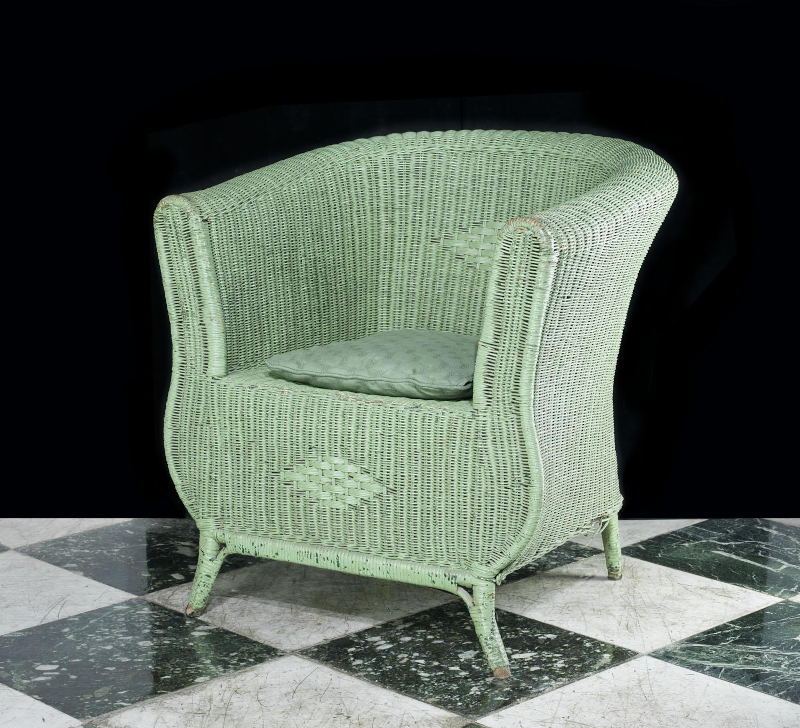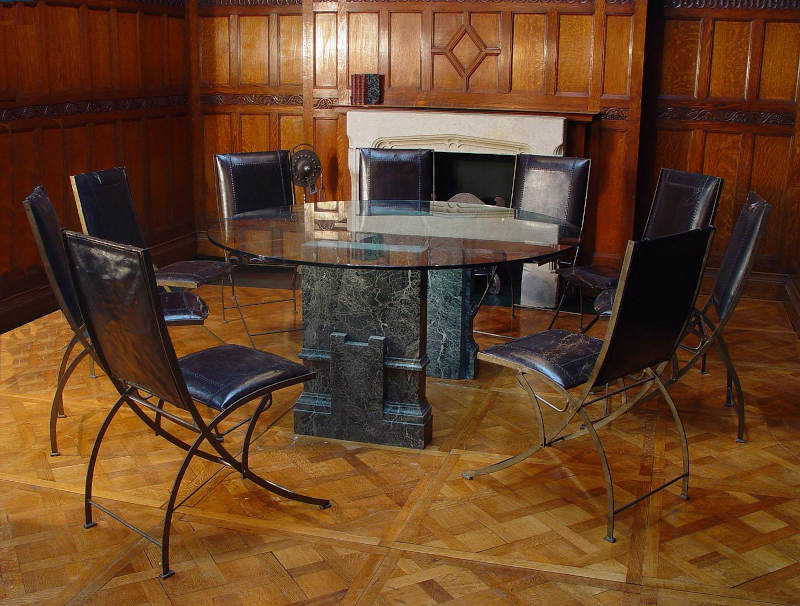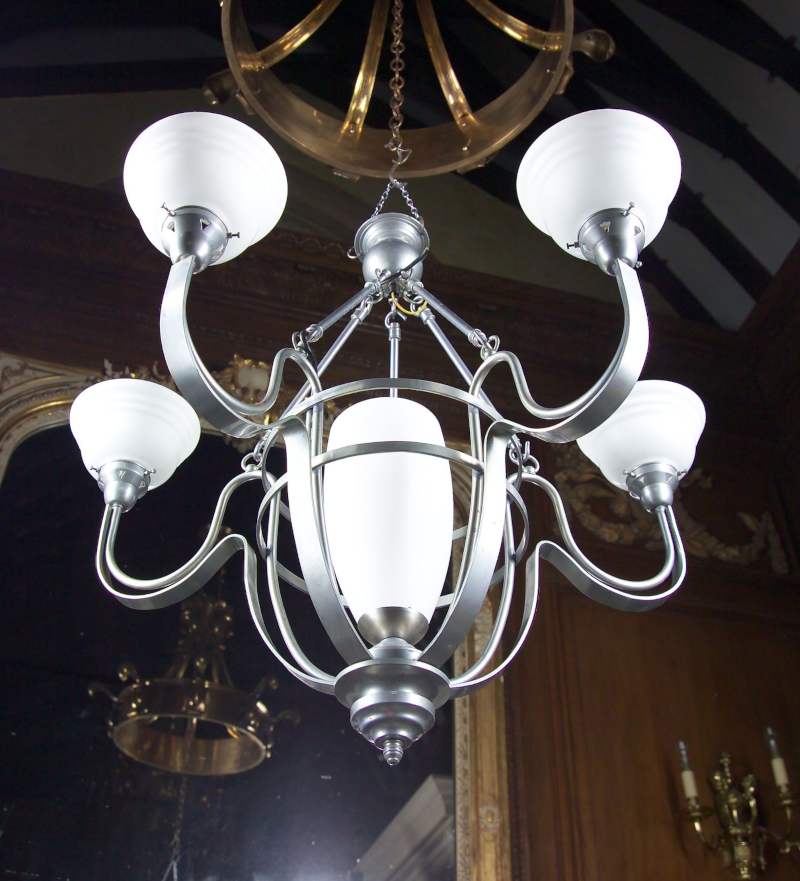Art Deco interior design is still as popular now as it was when it first emerged over a hundred years ago.
Its key characteristics are seen in numerous items - not just in furniture, but in jewellery, architecture, fashion, art, web design and even transport.
In this blog we’ll take a look at where Art Deco originated from and how its popularity grew so that it became one of the world’s most iconic styles.
We’ll also examine the designs that are used in Art Deco and how you can implement them in your home, from statement headboards to bold sunburst patterned rugs.

× 
What is Art Deco?
Art Deco, short for ‘Arts Décoratifs’, is portrayed by bold geometric patterns, deep rich colours and decadent detail work.
Its popularity peaked in the 1920s - 1940s. Think Hollywood old-school glamour, The Great Gatsby, Charleston flapper dresses and 1920s Paris.
Where did Art Deco originate from?
Art Deco got its name from an exhibition in Paris in 1925 - the International Exhibition of Modern Decorative and Industrial Arts
The Art Deco movement first emerged in France at the turn of the 19th century, when France wanted to make a stand against the art designs emerging from Germany.
The former popularity of Art Nouveau was becoming rather passé with its design of floral, floaty designs slowly dying out. We also have a separate guide on Art Nouveau furniture and design.
Art Deco got its name from an exhibition in Paris in 1925 - the International Exhibition of Modern Decorative and Industrial Arts.
This huge exhibition showcased the latest trends in design, architecture and decorative arts.
Paris is undoubtedly the birthplace of Art Deco era architecture; the first major building to be built in the Art Deco style is the Théâtre des Champs-Élysées. Its construction started in 1910 and lasted three years.
The designs were strongly influenced by ancient architecture from the Aztecs and Egyptians, and the bold streamlined architecture designs were used in the construction of buildings across Paris and America. It symbolised elegance and wealth through simple, stylised forms and geometric shapes.
Famous Art Deco buildings include the Chrysler Building, the Empire State Building and Radio City Music Hallin New York, but the design influences can be seen in office buildings, theatres, hotels and government buildings around the world.
Art Deco design is still used today throughout the world and easily lends itself to most budgets and design styles
The Dorchester Hotel in Mayfair features a high Art Deco interior - with highly-polished black and white marble flooring in its entrance - a prime example of Art Deco interiors.
Another example of Art Deco design is the London based Hoover Building - built in the 1930s for the American vacuum company. This Grade II listed building is Art Deco heaven.
The Hoover Building is now transformed into apartments, yet retains its Art Deco features.
Art Deco design is still used today throughout the world and easily lends itself to most budgets and design styles.
It’s perfect for mixing a touch of old-school glamour into a contemporary home, using high polished metals, luxurious fabrics and deep rich colours.

× 
There are some key designs used in Art Deco, which you can use when decorating your home. We’ll take you through them below.
What defines Art Deco patterns?
Repetitive patterns are often used - zig-zags, chevrons, fish scales, stripes and animal print
The patterns in Art Deco are very clear and precise - and are either used in the design of the furniture (so think curved, angular chair backs) or on the surface of the structure - for example zig-zag patterned cushions.
This style is also known as ‘Streamline Moderne’, which accentuates the curving forms of design and long horizontal lines. This is typically depicted in the nautical prints of the Art Deco period.
The beauty of Art Deco design is that it can be as big and as bold as you like - or use small touches such as sunburst mirrors and vintage wall prints.
A neutral background is key, layered against rich, royal colours. The mix is modern, vintage and futuristic; elegant, subtle and bold all in one.
Repetitive patterns are often used - zig-zags, chevrons, fish scales, stripes and animal print.
Furniture and accessories will be in bold geometric designs, using highly polished wood or metals and fabrics in rich opulent colours.
Wall art includes vintage posters featuring Art Deco steam trains, luxury liners or elegant scenes of 1920s Paris.
Choose to mix just one or two colours rather than a full palette of colours.
Bedrooms can incorporate Art Deco style using bold statement colours, oversized headboards in either gold, silver or wood, and chandelier lighting in tiered or elongated architectural form.

× 
Flooring can be highly-polished marble, wood, tile or luxury carpet. Patterned rugs tie in the Art Deco look.
Walls can feature curved mirrors, vintage prints, metal screening or wood panelling depending on your budget.
Art Deco furniture designers
Originally from Russia, Romain de Tirtoff is probably one of the best-known Art Deco designers
Originally from Russia, Romain de Tirtoff is probably one of the best-known Art Deco designers. He became one of the most influential fashion designers and illustrators in Paris during the 1920s.
Emile-Jacques Ruhlmann was a pioneer of French furniture, using expensive materials such as ivory, precious metals and exotic woods.
René Jules Lalique became one of the leading glass art designers in Paris at the turn of the Art Deco period. He was born in Paris in 1860 and his works are collectors’ items today.
Art Deco furniture style and characteristics
Art Deco interior design style uses bold colours, patterns and luxurious materials.
Fabrics include mohair cushions, suede stools, velvet curtains and marble, while metals are highly polished - such as gold, silver and chrome.
Accessories such as vases, mirrors and clocks are designed to be bold, using angular shapes, arches and curves.
Read our article for more information on the history of interior design. We also have guides on Jacobean era interiors and furnishings, plus one on Victorian interior design and history.
We have some wonderful examples of Art Deco antique fireplaces in our collection. Browse our collection or get in touch with us to find out more.